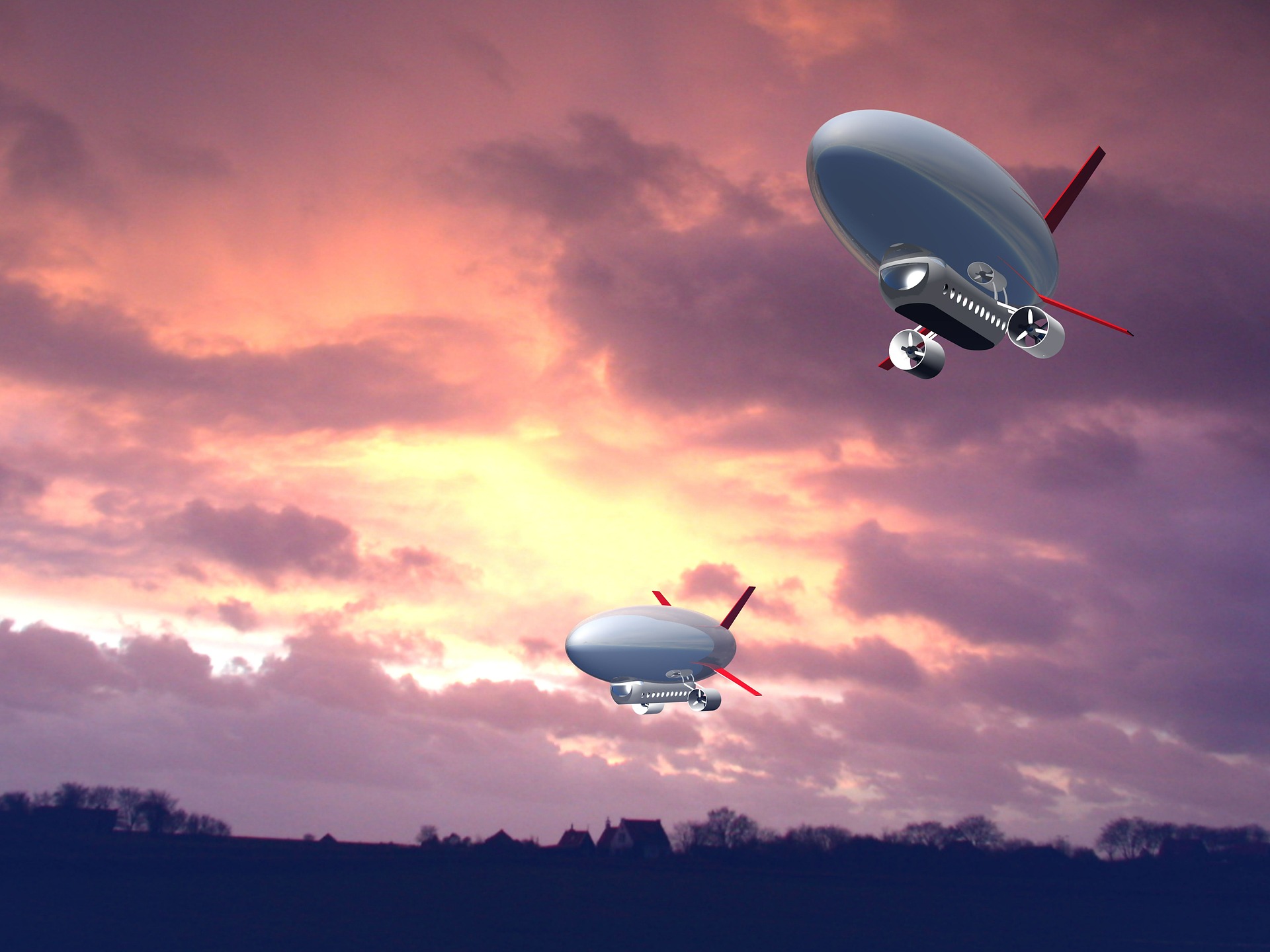Just how many of these majestic giants still grace our skies? The answer, surprisingly, is a mere handful, with only a select few actively soaring above the world today.
The allure of blimps, those graceful giants of the sky, has captivated imaginations for over a century. Once a symbol of technological prowess and luxurious travel, these lighter-than-air vehicles have undergone a fascinating evolution. From their early military applications to their current roles in advertising and observation, blimps have continuously adapted, weathering the storms of technological advancement and economic shifts. However, their story is one of both triumph and tribulation, marked by periods of immense popularity and dramatic declines. The quest to understand their present status is a journey into the realms of history, engineering, and the economics of aviation.
The world of blimps is, in a sense, a world of rarity. The figures, according to various sources, consistently hover around the same range: approximately 20 to 25 blimps remaining in existence globally. Of these, only about half are actively used for their intended purposes, most commonly advertising. This scarcity stems from a confluence of factors, including the high costs associated with their construction, operation, and maintenance.
- Exploring The Allure Of Erome Girlylana A Digital Sensation
- The Ultimate Guide To Stanley Cup Covers Protection And Style For Your Trophy
The very essence of a blimp, its ability to float, is predicated on the use of helium, a noble gas known for its lifting power and non-flammability. However, helium is a limited and expensive resource, adding significantly to the operational costs of a blimp. Coupled with the intricacies of piloting, maintenance, and stringent safety regulations, the financial burden of owning and operating a blimp becomes a significant deterrent.
| Blimp Statistics | Details |
|---|---|
| Total Blimps in Existence (approx.) | 20-25 |
| Blimps in Active Use (approx.) | Half of the total (for various purposes, including advertising) |
| Primary Uses Today | Advertising, observation, and broadcasting |
| Key Factors Limiting Numbers | High operational costs (helium, maintenance), stringent regulations |
| Notable Blimp Owners/Operators | Goodyear (Zeppelins), Van Wagner Airship Group |
For Further Information, please visit: Federal Aviation Administration (FAA)
The design and manufacturing of blimps have also evolved over time, with various manufacturers around the world contributing to their unique shapes, sizes, and capabilities. The Goodyear blimps, known worldwide for their iconic presence, are actually Zeppelins, a distinction based on their rigid internal structure. In contrast, the more commonly known "blimps" are non-rigid airships. Both types share the same basic principle of using lighter-than-air gases to achieve lift, but their internal construction and operational characteristics differ significantly.
- Tori Spellings Unforgettable Wedding A Journey Down The Aisle
- The Ultimate Football Guide Nfl News Scores And Analysis
Historically, airships, including blimps, played a significant role in both military and civilian applications. During World War II, the U.S. Navy utilized blimps for reconnaissance and anti-submarine patrols, showcasing their utility in surveillance and long-range missions. Even earlier, they were envisioned as a mode of luxurious travel, offering passengers a unique perspective of the world. The "golden age" of airships, however, met a tragic end with the Hindenburg disaster in 1937, which severely damaged public confidence and curtailed the development of these magnificent vehicles.
Today, the primary role of blimps has shifted towards advertising and aerial observation. Their ability to hover and move slowly makes them ideal platforms for displaying advertisements, capturing stunning aerial footage, and providing unique perspectives for sporting events and other large-scale gatherings. Companies like Goodyear and Van Wagner Airship Group have established themselves as key players in the modern blimp industry, owning and operating a significant portion of the active advertising blimps.
The operational aspects of blimps require skilled pilots, and the number of qualified individuals is relatively small. It is estimated that only about 40 to 50 pilots worldwide are licensed to fly the active blimps. The experience of piloting a blimp, often described as unique and fulfilling, involves understanding aerodynamics, meteorology, and the specific characteristics of these aircraft. For a pilot, the journey is a blend of skill, precision, and the sheer joy of controlling a colossal vessel in the skies.
One key to understanding the blimp's limited presence in the world is to consider the high costs associated with building and maintaining them. The process starts with the cost of helium, which is both expensive and a finite resource. Then come the expenses of specialized maintenance, which requires highly trained technicians who know how to handle the unique needs of these vessels. Compliance with strict aviation regulations adds another layer of expense, demanding thorough inspections, pilot training, and adherence to safety protocols.
Beyond the monetary factors, it is also worth noting that the design of a blimp is complex. Manufacturing a blimp requires specialized materials and craftsmanship, which can increase costs further. And finally, while the number of blimps remains constant, the demand for these aircraft is limited. There is not much call for blimps from commercial passengers today, so advertising is the primary source of revenue.
This landscape has led to the unique situation where only a handful of blimps are still used today, and the majority of them are used for advertising purposes. Even companies that once pioneered the use of these aircraft, like Goodyear, now focus on using the blimps as Zeppelins instead. As the blimp industry develops, there will be opportunities for innovators to take on this legacy.
In conclusion, the world of blimps is a testament to human ingenuity and the pursuit of innovation. While their numbers may be limited, their impact on aviation and popular culture is undeniable. From their role in military history to their modern presence in advertising, blimps continue to captivate, reminding us of the beauty and wonder of flight.



Detail Author:
- Name : Cortez Pagac
- Username : pattie34
- Email : john47@ohara.com
- Birthdate : 2003-04-19
- Address : 504 Bridie Mountains Apt. 533 Carmineshire, IL 40805
- Phone : +12793130433
- Company : Hane, Mohr and Romaguera
- Job : Homeland Security
- Bio : Odio quaerat sapiente sequi id eligendi qui. Sint officia et debitis ut id voluptatem. Earum aut officiis ipsam.
Socials
tiktok:
- url : https://tiktok.com/@camylle_official
- username : camylle_official
- bio : Quos dignissimos voluptatem officia eum voluptatem qui. Totam sint sed vel.
- followers : 3011
- following : 1731
linkedin:
- url : https://linkedin.com/in/camyllesanford
- username : camyllesanford
- bio : Laudantium id mollitia vitae quia.
- followers : 2544
- following : 2953
twitter:
- url : https://twitter.com/csanford
- username : csanford
- bio : Necessitatibus est commodi illo suscipit iusto et. Tenetur ducimus incidunt culpa alias magni. Nulla dolorum deleniti architecto ea saepe nulla quis.
- followers : 3898
- following : 862
facebook:
- url : https://facebook.com/camyllesanford
- username : camyllesanford
- bio : Et expedita est rem recusandae. Voluptatum et necessitatibus est optio.
- followers : 4632
- following : 2763